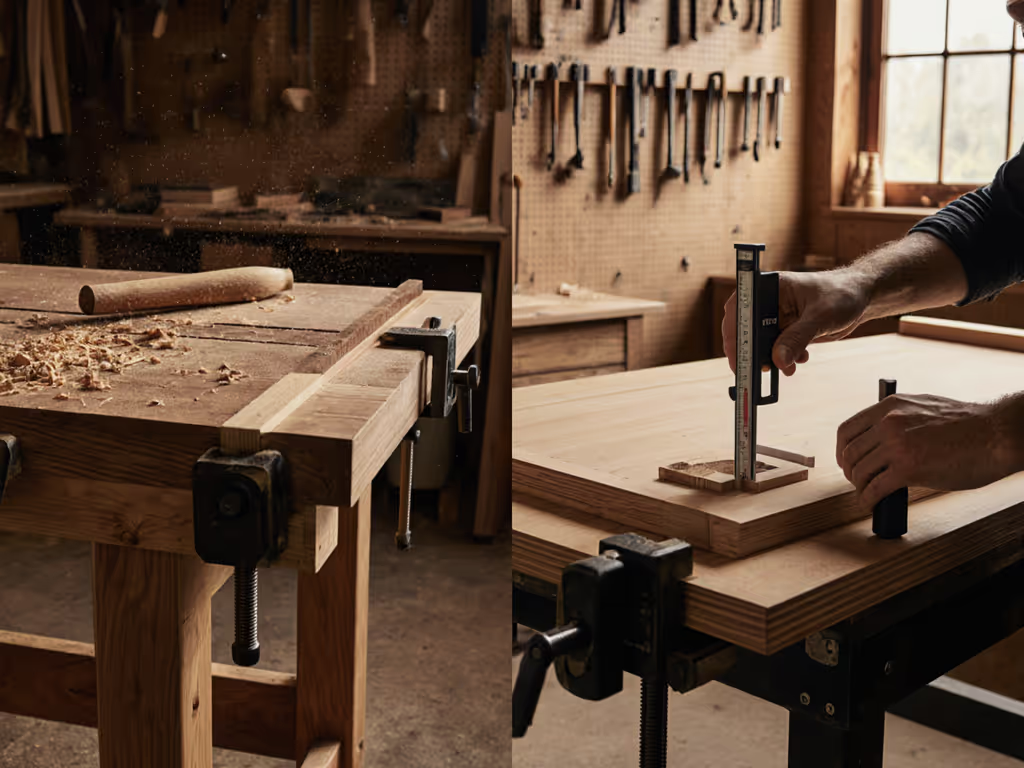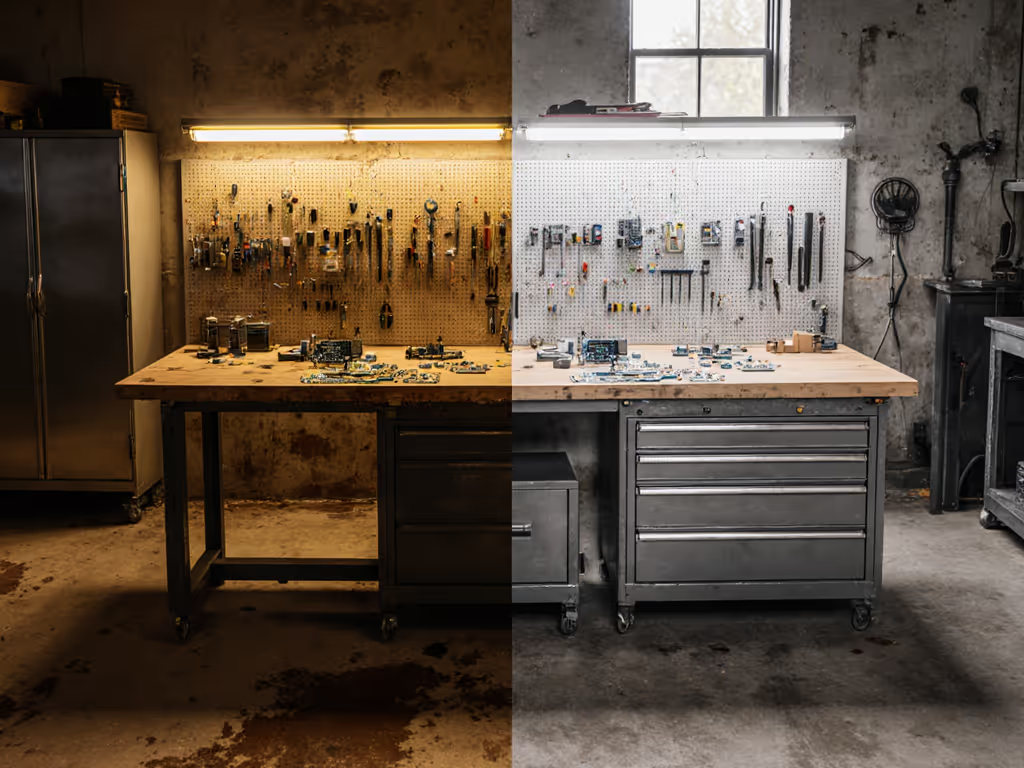
Workbench Warranty Comparison: Industrial Protection Guide
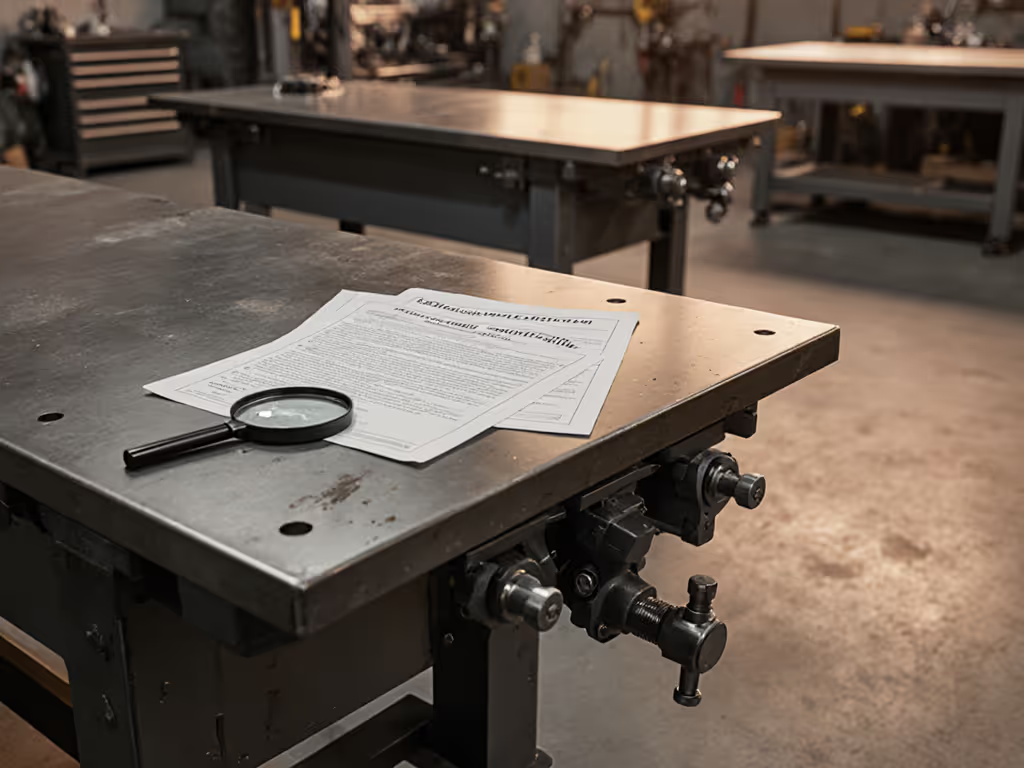
As a craftsman who depends on precision day in and day out, your workbench warranty comparison isn't just about paperwork, it is your frontline defense against compromised work quality. When evaluating an industrial workbench, warranty terms reveal far more than coverage duration; they telegraph the manufacturer's confidence in how that bench will perform under the exact conditions that define your work: heavy planing, assembly pressure, and the daily demands of precision craftsmanship. A comprehensive warranty reflects a human-first approach to bench design, one where durability isn't an afterthought but engineered into every joint, surface, and adjustment mechanism from day one.
Your posture is a spec; design the bench around it.
Understanding Warranty Terms Through a Maker's Lens
Let's be honest: most of us only think about warranty terms when something goes wrong. But smart craftsmen evaluate protection before purchase, because warranty language reveals what manufacturers consider critical failure points, the very elements that could compromise your precision work when fatigue sets in after hours at the bench. That is why I approach bench warranty terms as measurement-backed indicators of thoughtful design, not just customer service promises.
Consider this: When I adjusted my own bench height by just 30mm and added a foot rail, I transformed not just my comfort but my accuracy. The work improved because I wasn't fighting my body. That experience taught me that warranty coverage should reflect how benches perform in actual use, not just in controlled factory tests.
Key Questions for Your Workbench Warranty Comparison
What specific bench components should I prioritize in warranty coverage?
Don't get distracted by headline warranty lengths alone. Scrutinize what's covered:
- Structural frame and joints (most critical, racking under pressure creates subtle inaccuracies)
- Work surface integrity (warping or delamination compromises flatness for glue-ups)
- Adjustment mechanisms (height rails, casters, leveling feet that maintain precise setup)
- Vise mechanisms and mounting hardware (clamping consistency directly affects joinery accuracy)
A manufacturer warranty evaluation that focuses only on "bench frame" coverage while excluding work surfaces leaves you exposed to the very failures that undermine precision work. For a deeper look at how different tops behave under load and vibration, see our bench top materials test. Look for language that explicitly covers "flatness maintenance under operational loads", this measurement-backed specification matters far more than generic promises.
How does warranty length correlate with actual bench longevity in workshop conditions?
Many makers assume longer warranty = better product, but this isn't always true. A 12-year warranty that excludes common failure points like leveling feet or surface integrity provides false security. Conversely, a 5-year warranty with comprehensive coverage of precision-critical components may better serve your needs.
Consider Formaspace's "12 years, 3 shifts" warranty that includes frames, surfaces, bin rails, and levelers. This comprehensive coverage reflects confidence in their entire system's performance under real-world conditions, not just the primary structure. When manufacturers warranty consumable components like leveling feet (which endure constant micro-adjustments), they're acknowledging these elements directly impact your work quality.
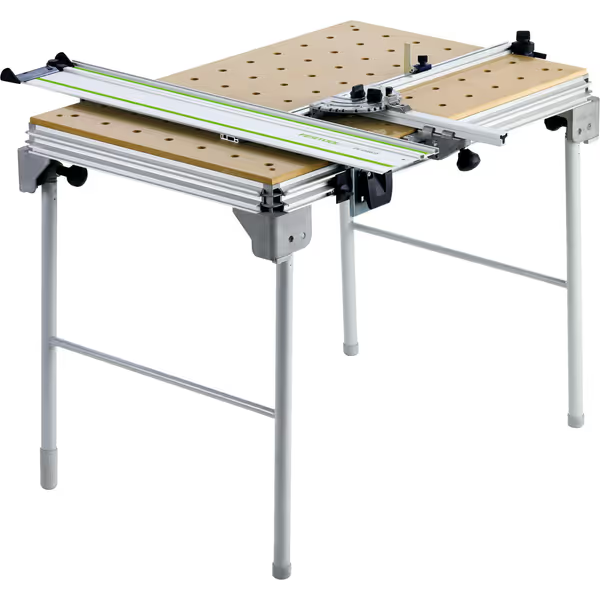
Festool MFT/3 Multifunction Table
The Festool MFT/3 portable workbench, for example, offers a more limited warranty focused on structural integrity but excludes surface wear, a telling detail for precision work where surface flatness directly affects cut accuracy. This highlights why warranty terms should align with your specific workflow: if you're primarily doing rough cutting, surface wear matters less; for fine joinery, it's critical.
What should I know about the warranty claim process before purchasing?
This is where warranties move from theoretical to practical. Ask these warranty claim process questions before buying:
- Is documentation required beyond proof of purchase? (Some require original assembly photos)
- Who pays for shipping return costs? (Hidden costs that add up with heavy benches)
- What's the response timeline for claims?
- Are replacement parts stocked locally or shipped from overseas?
IAC Industries' 10-year warranty, for instance, specifies that "products must be returned to IAC LLC with transportation charges prepaid by purchaser." This seemingly small detail means you'll shoulder shipping costs for a 180-pound bench, a significant consideration often overlooked in workbench warranty comparison.
How does bench construction affect warranty coverage and validity?
Your bench's construction directly impacts warranty protection. Look for these red flags:
- "Void if modified" clauses that exclude standard workshop adaptations
- "Normal wear and tear" exclusions that cover catastrophic failure but not gradual degradation
- "Commercial use only" restrictions that invalidate coverage for serious hobbyists
Many warranties exclude damage from "user modifications," yet countless makers add custom features like bench dogs or specialized vises. To choose workholding that won't compromise structure or void terms, compare bench dog systems and compatibility. A truly craft-oriented warranty accommodates reasonable modifications that enhance functionality without compromising structural integrity.
Why does "long-term bench protection" require more than just a time-based warranty?
Time-based warranties alone miss the point for precision work. Consider:
- Load capacity limits (some warranties void coverage above specific weights)
- Environmental restrictions (humidity, temperature ranges that affect wood tops)
- Usage frequency caps ("single shift" vs. multi-shift coverage)
If your shop faces humidity swings or coastal air, use our climate-proof workbench guide to align materials and maintenance with warranty limits. True long-term bench protection addresses how benches perform under the specific conditions of craftsmanship, not just time elapsed. Shure USA's lifetime warranty, for example, specifies "proudly made in the USA" with coverage that implies domestic manufacturing standards, but lacks specific load or environmental parameters crucial for precision work.
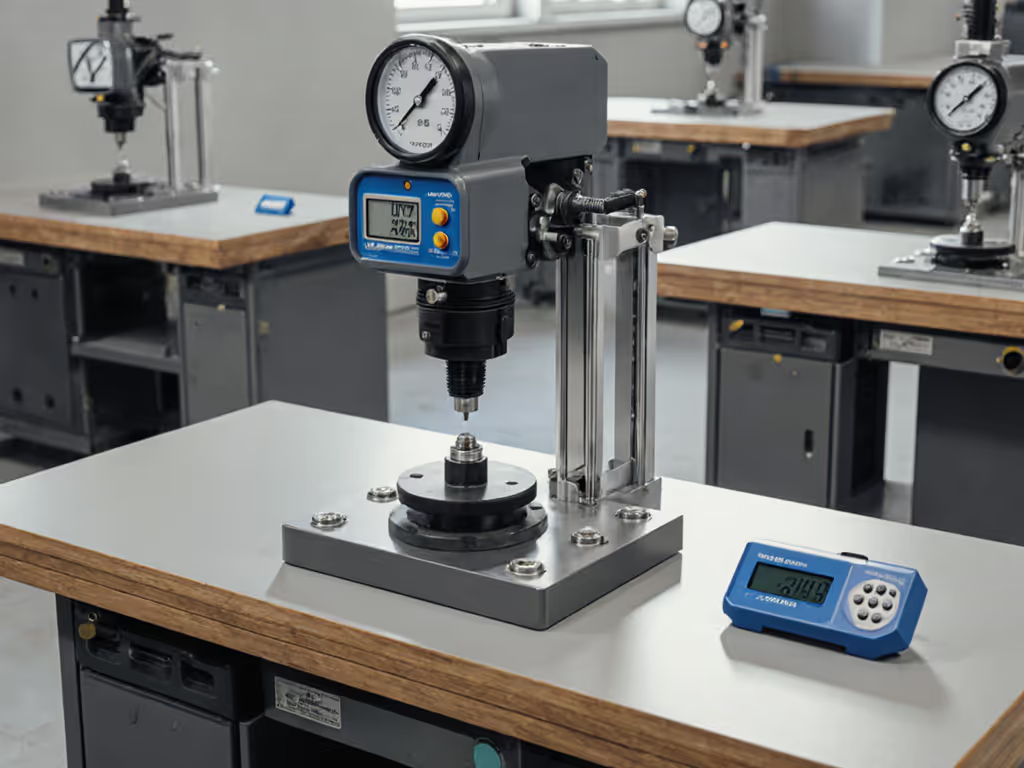
How can I evaluate if a "lifetime warranty" has meaningful coverage for my needs?
"Lifetime" sounds impressive but often carries hidden limitations. Scrutinize:
- Whose lifetime? (Manufacturer's, your business's, or personal)
- What constitutes "failure" (structural collapse vs. performance degradation)
- Required maintenance documentation (some require proof of regular calibration)
Best Steel Cabinet notes that "good brands usually provide a warranty of more than 5 years," but meaningful lifetime coverage must define performance thresholds that matter to craftsmen, like maintaining flatness within 0.005 inches under 500 lbs of clamping pressure. Maintaining surface flatness and finish is easier with the practices in our workbench top care guide, which can also help you stay compliant with warranty maintenance requirements.
What's commonly excluded from workbench warranties that affects precision work?
Watch for these often-excluded elements that directly impact your craftsmanship:
- Surface flatness maintenance (critical for joinery accuracy)
- Leveling mechanism precision (affects consistent work height)
- Clamping face integrity (vise mounting points that loosen with heavy use)
- Finish durability (affects glue release and tool placement)
Many warranties cover "defects in materials and workmanship" but exclude "normal wear," which for precision work includes gradual loss of flatness that accumulates over time. This gap leaves you unprotected against the very failures that undermine accuracy as your bench ages.
Making Your Warranty Work for Your Workflow
When I teach posture check sessions for woodworkers, I emphasize that comfort and control are prerequisites for precision and consistency. The same principle applies to warranty evaluation: protection that doesn't address the specific failure points affecting your workflow is no protection at all.
For professional shops running multiple shifts, seek warranties that explicitly cover multi-shift operation with pro-rated terms. For serious hobbyists, prioritize coverage of components that degrade with intermittent but heavy use, like leveling feet that maintain precise height settings session after session.
Next Steps: Your Warranty Evaluation Checklist
Before finalizing your next workbench purchase, conduct this quick assessment:
- Map critical failure points to your specific work (e.g., flatness for hand-tool work, load capacity for assembly)
- Verify coverage of those points in warranty documentation
- Contact customer service with a hypothetical claim to test responsiveness
- Check local parts availability for common replacements
- Document initial condition with photos/video for potential future claims
Your workbench isn't just furniture, it's your primary tool for precision. A thoughtful warranty comparison reveals whether a manufacturer understands the real demands of craftsmanship or just sells products. When warranties cover the elements that directly impact your posture, control, and precision, you've found a partner invested in your long-term success as a maker.
Remember: Your posture is a spec; design the bench around it. And when choosing protection, ensure that warranty terms reflect the same human-first approach that makes your work exceptional.



